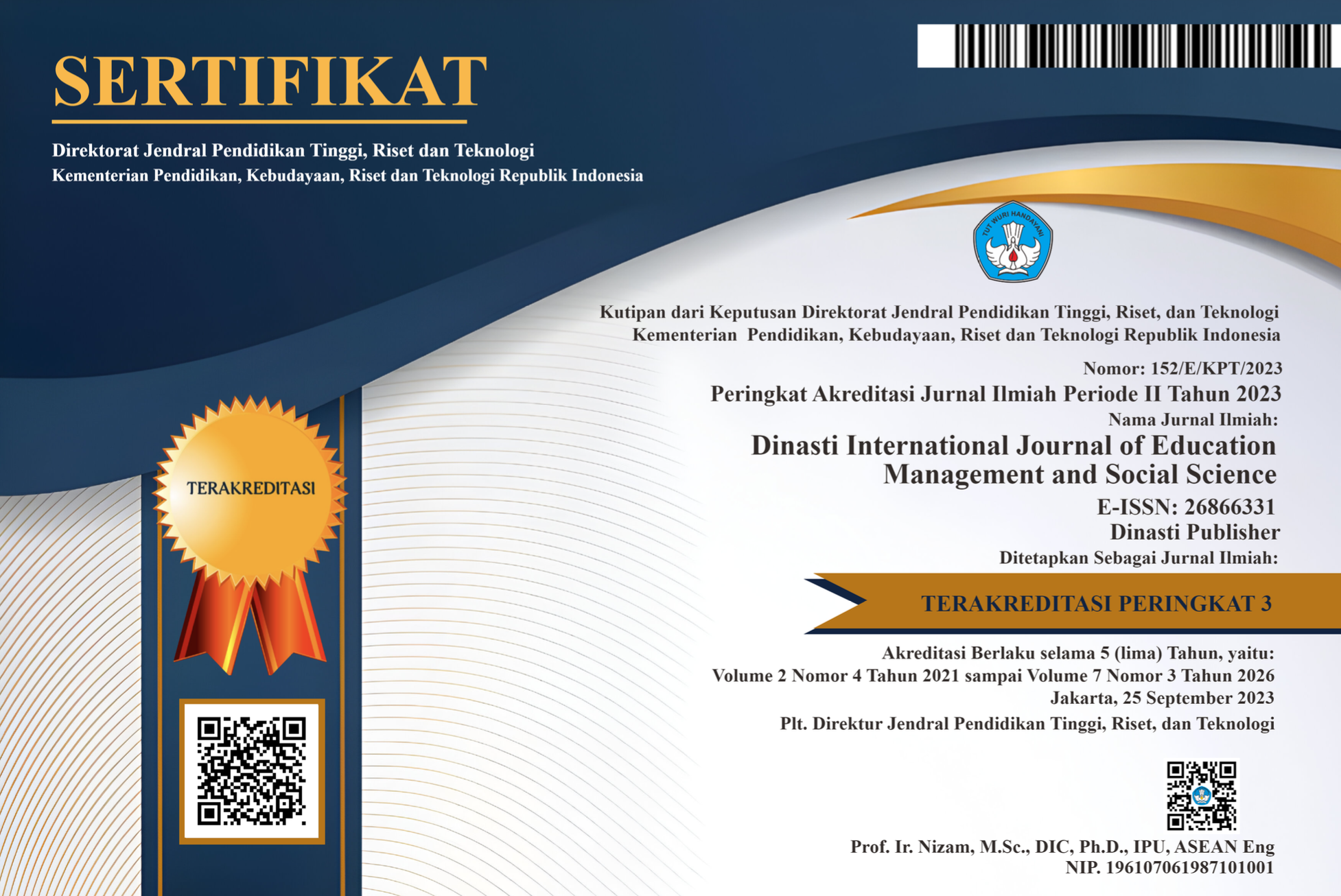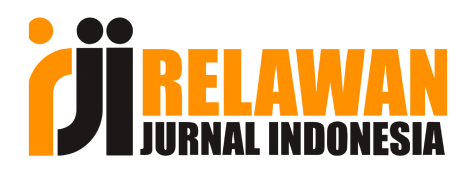The Effect of Cash Flow Components and Accounting Profit on Stock Returns Moderated by Company Size in Construction Companies on The Indonesian Stock Exchange in 2019-2023
DOI:
https://doi.org/10.38035/dijemss.v6i5.4678Keywords:
Cash flow, Accounting Profit, Firm Size, Stock ReturnAbstract
This study aims to examine the effect of cash flow and accounting profit on stock returns in construction companies listed on the Indonesia Stock Exchange during the 2019–2023 period, with firm size as a moderating variable. Using a quantitative approach, the research utilized secondary data derived from annual financial reports, analyzed through panel data regression and Moderated Regression Analysis (MRA) using E-Views software and using SPSS software for the KMO test. The results showed that cash flow and accounting profit each have a positive and significant effect on stock returns, meaning that improvements in these financial indicators tend to increase investor returns. However, firm size was found to weaken the positive relationships between both cash flow and accounting profit with stock returns. In larger companies, the increase in cash flow or profit does not necessarily enhance investor trust, potentially due to more complex management and reporting structures. These findings highlight the need for companies to maintain efficient financial performance while managing their public image and transparency to maintain investor confidence. The study is limited to construction companies; future research is recommended to include broader sectors such as GCG or LQ-45 listed firms. The implication for company management is to pay strategic attention to cash flow, profitability, and company size to boost stock performance and investor appeal.
References
Al-Dhaimesh, O. H. (2021). The impact of cash flow statement components on stock volatility: Evidence from Qatar. Investment Management & Financial Innovations, 18(2), 365.
Alwinie, A. A., Nurhayati, P., & Sartono, B. (2024). The Role of 7P Marketing Mix toward Consumer Satisfaction and Loyalty of XYZ Beauty Clinic. Journal of Consumer Sciences, 9(1), 40–62.
Asyik, N. F. (2023). Peran Variabel Moderasi Ukuran Perusahaan pada Pengaruh Laba Akuntansi dan Komponen Arus Kas terhadap Reaksi Pasar. Jurnal Ilmu Dan Riset Akuntansi (JIRA), 12(12).
Azizah, N., & Purwasih, D. (2023). Pengaruh Komponen Arus Kas Dan Laba Akuntansi Terhadap Return Saham Dengan Ukuran Perusahaan Sebagai Variabel Moderating: Studi Empiris pada Perusahaan Sektor Industri yang Terdaftar di Bursa Efek Indonesia. Jurnal Revenue: Jurnal Ilmiah Akuntansi, 3(2), 699–714.
Balliyand, A. F. Z., & Dwisstira, V. K. (2024). The Influence Of Operating Cash Flow, Economic Performance And Company Size On Profit Persistence (Study of Property and Real Estate Companies Listed on the Indonesia Stock Exchange (BEI) for the 2018-2021 Period). Economics and Digital Business Review, 5(1), 373–389.
Belkaoui, A. R. (2014). Accounting theory.: USA. Learning Solution Specialty Publications Ltd.
Central Bureau of Statistics. (2023). Banyaknya Perusahaan Konstruksi, 2021-2023. https://www.bps.go.id/id/statistics-table/2/MjE2IzI=/banyaknya-perusahaan-konstruksi.html
Handayani, S. R., & Rahayu, S. M. (2019). Stock return and financial performance as moderation variable in influence of good corporate governance towards corporate value. Asian Journal of Accounting Research, 4(1), 18–34.
Hartono, J. (2022). Teori portofolio dan analisis investasi.
Ikatan Akuntansi Indonesia. (2016). Kerangka Konseptual Pelaporan Keuangan. Dewan Standar Akuntansi Keuangan Ikatan Akuntan Indonesia.
Juniarti, I., & Satriawan, B. (2023). Effect of Operating Cash Flow and Accounting Profit on Stock Return: (Case Study of LQ-45 Company in Indonesia Stock Exchange). PENANOMICS: International Journal of Economics, 2(1), 83–95.
Kipngetich, S. Ben, Tenai, J., & Kimwolo, A. (2021). Effect of operating cash flow on stock return of firms listed in Nairobi Security Exchange. Eastern Journal of Economics and Finance, 6(1), 26–35.
Laghari, F., Ahmed, F., & López García, M. de las N. (2023). Cash flow management and its effect on firm performance: Empirical evidence on non-financial firms of China. Plos One, 18(6), e0287135.
Nursita, M. (2021). Pengaruh laba akuntansi, arus kas operasi, arus kas investasi, arus kas pendanaan, dan ukuran perusahaan terhadap return saham. Going Concern: Jurnal Riset Akuntansi, 16(1), 1–15.
Pratiwi, S. D., Kusumawardani, A., & Sari, D. M. (2019). Pengaruh arus kas dan laba akuntansi terhadap return saham pada perusahaan kosmetik yang terdaftar di BEI. Jurnal Ilmu Akuntansi Mulawarman (JIAM), 4(4).
Purba, D. P., Telaumbanua, Y., & Rioni, Y. S. (2023). The Effect of Cash Flow, Accounting Profit, Total Asset Turn Over on Manufacturing Company Stock Return on the Indonesia Stock Exchange. Jurnal Ekonomi, 12(02), 984–993.
Sartono, A. (2015). Manajemen Keuangan teori dan Aplikasi. Yogyakarta: Bpfe.
Sinaga, H. H., & Pamudji, S. (2011). Analisis pengaruh total arus kas, komponen arus kas, laba akuntansi terhadap return saham. UNIVERSITAS DIPONEGORO.
Suwardjono, T. A. P. P. K. (2014). Teori Akuntansi. Yogyakarta: BPFE Yogyakarta.
Yuwana, V. (2014). Analisa kemampuan laba dan arus kas operasi dalam memprediksi arus kas operasi masa depan. Petra Christian University.
Downloads
Published
How to Cite
Issue
Section
License
Copyright (c) 2025 Tasya Anggeni, Estralita Trisnawati, Sriwati Sriwati

This work is licensed under a Creative Commons Attribution 4.0 International License.
Authors who publish their manuscripts in this journal agree to the following conditions:
- The copyright on each article belongs to the author(s).
- The author acknowledges that the Dinasti International Journal of Education Management and Social Science (DIJEMSS) has the right to be the first to publish with a Creative Commons Attribution 4.0 International license (Attribution 4.0 International (CC BY 4.0).
- Authors can submit articles separately, arrange for the non-exclusive distribution of manuscripts that have been published in this journal into other versions (e.g., sent to the author's institutional repository, publication into books, etc.), by acknowledging that the manuscript has been published for the first time in the Dinasti International Journal of Education Management and Social Science (DIJEMSS).















































